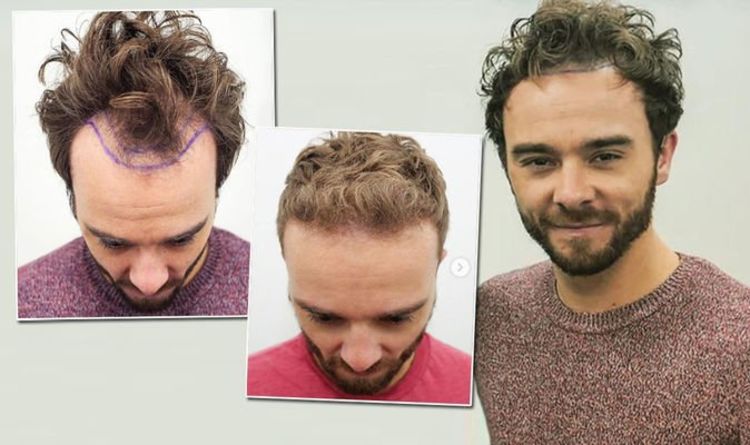
The Cost Of Travelling To The USA For Hair Transplants
Many persons suffering hair loss find emotionally and visually appealing the idea of recovering more head of hair. The USA has grown to be one of the most reputable hair transplant sites because to modern technologies and seasoned experts. But arriving in the United States for such a procedure involves not just a medical appointment schedule but also many layers of financial planning. A hair transplant in the USA often costs more than in other countries; when combined with travel, hotel, and post-operative care, the whole cost may be somewhat heavy. This article examines, in addition to cash, the real cost of a hair transplant in the USA in terms of quality, value, and long-term satisfaction.
Medical Costs and Clinic Selection
Naturally, the core of any hair transplant route is the medical method itself. In the United States, a hair transplant typically costs between $4,000 and $15,000 depending on several factors. These include the kind of operation done—FUE (Follicular Unit Extraction) or FUT (Follicular Unit Transplantation), surgeon experience, clinic reputation, and required graft count. Modern facilities and demand mean highly skilled surgeons in major cities as New York, Los Angeles, or Miami charging premium costs.
Patients sometimes choose the USA because of its rigorous medical policies and outstanding surgical standards, which might provide faith in the results and peace of mind. Still, this degree of trust has a cost. While they could charge more, clinics using robotic or high-tech therapies might also provide faster recovery and better transplant survival rates. Apart from the procedure, patients basically pay for the expertise and safety that accompany a medically advanced environment.
Travel and Accommodation Expenses
Apart from the medical costs, arriving in the United States adds even another degree of spending. International travel alone might range from $500 to over $2,000 depending on the origin, degree of service, and booking date. Particularly for patients staying for a longer-term rehabilitation, travel insurance and visa application costs also have to be taken into account. These expenses vary significantly, but they are nevertheless important considerations for a medical holiday budget.
Patients need accommodation once in the United States for pre-operative appointments, the procedure itself, and the initial phase of recovery. Hotel costs in major cities vary from $100 to $300 per night; depending on clinic post-operative recommendations, patients may have to remain nearby for up to one week or more. Though some clinics provide combination packages including lodging and transportation, they are not always reasonably priced or convenient. City transportation also adds to the total whether it’s via taxis, ridesharing apps, or rental cars.
Recovery, Follow-Up, and Hidden Expenses
Usually advised of patients after a hair transplant is a strict post-operative regimen includes drugs, shampoos, and regular consultations. While some of these might be covered by the surgical expenses, others could be recommended or required. Part of the ongoing cost of therapy are specialist hair care products, prescription medicines for inflammation or infection prevention, and follow-up visits.
Sometimes patients choose to stay in the United States long enough for their first follow-up appointment, which might call for paying for housing and transportation. Others arrange online meetings, however even these may incur additional expenses. One should also consider the likely need of a second surgery. While not normally necessary, certain patients may need another transplant operation to achieve desired density, therefore adding to the overall expense of the therapy.
Comparing Value: Cost vs. Quality
Given the anticipated quality of care, many patients feel the initial cost of a hair transplant in the USA is well worth it, even if it may be much more than in other well-known destinations as Turkey, India, or Thailand. USA has several leading hair transplant surgeons and research centers; patients usually benefit from new techniques and tailored treatment plans. Thus, one may expect more natural-looking outcomes, less scarring, and better graft retention.
Patients also find benefit in the security of a regulated medical environment—with access to legal remedies, skilled medical professionals, and comprehensive documentation. For individuals who are wary about less controlled medical tourism destinations, this degree of knowledge might be fairly comforting. For those who have financial flexibility, the additional expense is not just for surgery but also for better overall experience from consultation to recovery.
Financial Planning and Emotional Investment
More than simply price for anybody considering a hair transplant abroad, budgeting is about ensuring peace of mind and planning the least difficult recovery. Those choosing the USA should ideally start their financial planning really early. If one saves little sums or searches for financing options offered by certain clinics, the expense might be more under control. Out-of-pocket budgeting becomes even more crucial as hair transplants are considered elective operations and certain insurance policies exclude them.
Emotionally, a hair transplant is a major decision. It invites sensitivity, dreams, and expectations. The financial investment relates to emotional outcomes wherein the success of the procedure might improve personal image and self-esteem. Many individuals find that the emotional benefit of the peace of mind associated with qualified surgeons and properly controlled treatments is rather high, thereby justifying the cost in ways other than just numbers.
Conclusion
A hair transplant trip to the USA is a complex investment combining medical, logistical, and emotional elements into one main decision. Even although the procedure may have a high base cost, the additional expenses of travel, hotel, post-operative care, and recovery support may quickly bring the total to a much more relevant level. For many, however, the promise of new surgical techniques, customized treatment, and access to world-class medical professionals overcomes this. Although pursuing hair restoration abroad requires careful planning and fair expectations, done correctly it may provide incredible, changing effects. The cost finally more reflects investing in oneself—with trust, care, and the goal of long-term confidence and well-being than it does in simple financial expenditure.